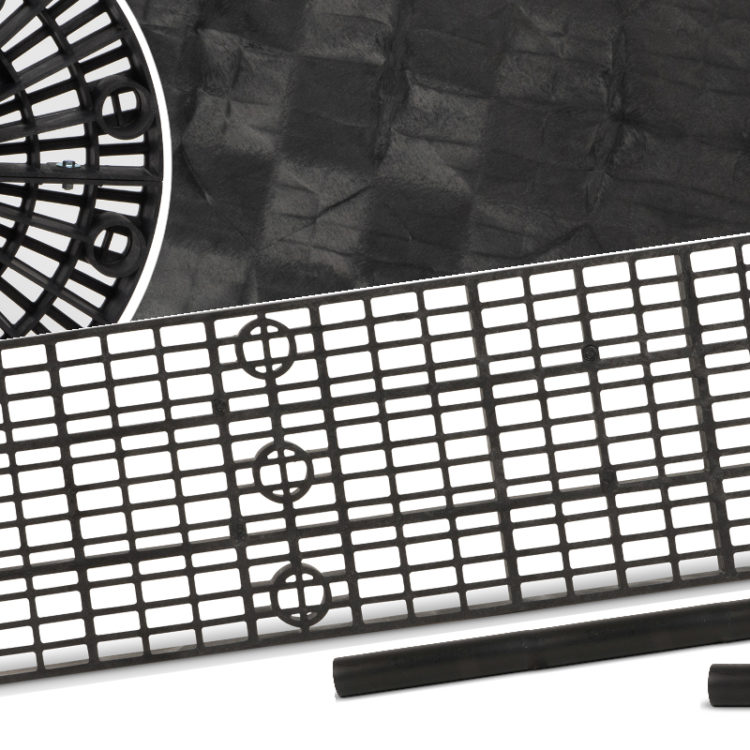5 Common Merchandising Words Every Retailer Should Know
Retail vocabulary tends to evolve as new ideas and technology enter the industry. As stores create new ways to engage with customers and create unique experiences, the retail dictionary will continue to grow.
These five retail terms weren’t mainstream a few years ago but are quickly becoming part of a retailer’s toolkit:
1. Brick and Click
It’s becoming more common for brick-and-mortar retailers to integrate their stores into eCommerce channels. This practice has become known as “brick and click.” This allows customers to enjoy a holistic experience and get the best of both worlds.
Customers are increasingly interested in the idea of shopping for a product online, then completing the purchase in the store. They want to explore products in the comfort of their own homes, but before they commit to buying they want to see and feel the product in person.
This allows customers to avoid an unsuccessful trip to the store, where a product may be out of stock or otherwise not available. It also eliminates the need to pay for shipping and wait several days for delivery.
2. Augmented Reality
As a growing retail trend, augmented reality enhances the shopper’s experience by using virtual tools to spur sales. Also simply called AR, augmented reality can take several forms. For instance, a shopper might scan a QR code with their mobile device to access a product demo video giving customers an idea of how to use the product or what the product can do before they buy it.
Another example is an in-store app that integrates AR technologies. App users can access special deals by pointing their phone in a certain direction or hovering it over specific products.
AR technology capitalizes on the growing trend of shoppers using their phones in-store. Retailers can deliver new experiences through the same devices their customers are already using and familiar with.
3. Anchor Store
Anchor store isn’t a new term, but it is experiencing a bit of a makeover. By definition, an anchor store is typically a large and well-known store (such as a department store or chain store) that “anchors” the rest of the shopping center. They tend to bring in a lot of foot traffic, which is why many small and medium-sized retail stores make their homes near a larger anchor store.
In the past, anchor stores were the linchpin of a shopping mall’s success. With more shopping malls shuttering and larger retailers downsizing their locations, the role of the anchor store looks a little different than it did 10 years ago.
Anchor storefronts that have been vacated are finding new life with things like pop-up shops, temporary stores, and special events. These help to keep a steady flow of customer traffic while continuing to provide new experiences for shoppers.
4. Cross Merchandising
Cross merchandising is another term that’s been around the block, but it bears just as much importance today as it ever has. Cross merchandising refers to how retailers display products from different categories to drive add-on sales. Retailers strategically place similar or complementary items together, hoping that customers will purchase them together and increase their average ticket size.
For example, peanut butter and jelly might be located in different sections of a grocery store aisle. But since these items are often used together, a retailer might create a dedicated display of PB &J products. The same concept applies to placing hamburger buns near the meat section, lighters near the birthday candles, or ice cream scoops on the ice cream aisle.
Most often, cross-merchandising items are those that customers buy on impulse. The idea is to make it convenient for them to complement their purchase with items they’re most likely to need but might not be actively thinking of.
One hack for retailers is to choose complimentary items that have the highest profit margin. These may or may not be the most expensive items, but you’ll end up moving more merchandise and making more profit.
5. Big Data
The term Big Data has been around for years, but it’s been steadily growing roots in the retail world. For many industries, Big Data transforms how retailers understand their customers and how their business operates. By analyzing data in real-time, retailers can create better connections with shoppers and find more effective ways to engage with them.
Retailers create tons of first-party data every day. Big Data takes this to the next level by adding the analysis layer — and later, the action layer. It encompasses everything from inventory and sales to customer loyalty programs and pricing. Retailers can use their findings to support their merchandising, pricing, and marketing strategies to drive even more sales moving forward.One note here, retailers need to be cautious with Big Data strategies as customers become more protective of their privacy. Retailers have a responsibility to protect the privacy of their customers, doing so builds a trustworthy brand and customer loyalty.
Next Steps
The successful implementation of any strategy above requires proper usage and placement of the right fixtures to create a one-of-a-kind shopping experience. At SPC Retail®, we have a wide range of versatile solutions so you can create eye-catching displays throughout your store. Visit our products page to learn more about SPC Retail® displays.





